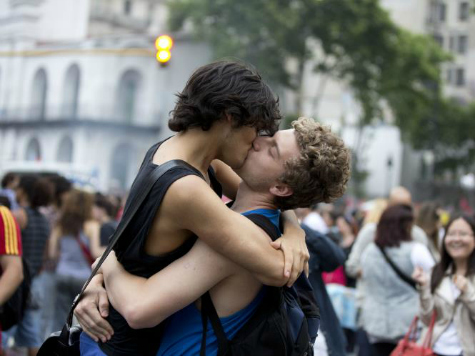The Washington Post reports that a highly definitive study from 2013 has pegged the size of the gay population in the United States at far less than has sometimes been estimated.
The National Health Interview Survey by the Centers for Disease Control and Prevention, which is the federal government’s most relied upon estimate of the nation’s health and behaviors, found that fewer than 3% of respondents self-identified as gay, lesbian, or bisexual. Only 1.6% of respondents self-identified as gay or lesbian, and even less, 0.7%, self-identified as bisexual.
The estimate of the percentage of bisexuals was lower than the 2008 General Social Survey, which estimated that number at 1.1 percent, while other surveys have intimated that the percentage of bisexuals is the same as gays.
Conversely, 96.6% self-identified as straight, while 1.1% answered, “I don’t know the answer” or stated they were “something else.”
Gary J. Gates, a demographer at the Williams Institute, a research center at the University of California at Los Angeles that studies the lesbian, gay, bisexual and transgender (LGBT) population, acknowledged, “This is a major step forward in trying to remedy some of these gaps in our understanding of the role sexual orientation and gender identity play in people’s health and in their lives.”
The study was first done in 1957; the Census Bureau conducts it and sends the data to the CDC. It is widely considered highly reliable; the 2013 survey interviewed 33,557 adults between the ages of 18 and 64 using face-to-face interviews with additional telephone questions. The questions ranged from medical care and vaccinations to tobacco use. Government health officials champion the NHIS survey because the population studied is so large.
Brian W. Ward, the researcher for the report, said some of the other findings included:
- Gays were more likely to smoke or have five or more drinks in one day than straights.
- More straight women considered themselves in excellent or very good health than lesbians did of themselves.
- More gays were likely to have had a flu shot than straights; gay men were not as overweight as straight men.
- Bisexuals were more likely to have suffered psychological distress in the last month than straights.

COMMENTS
Please let us know if you're having issues with commenting.